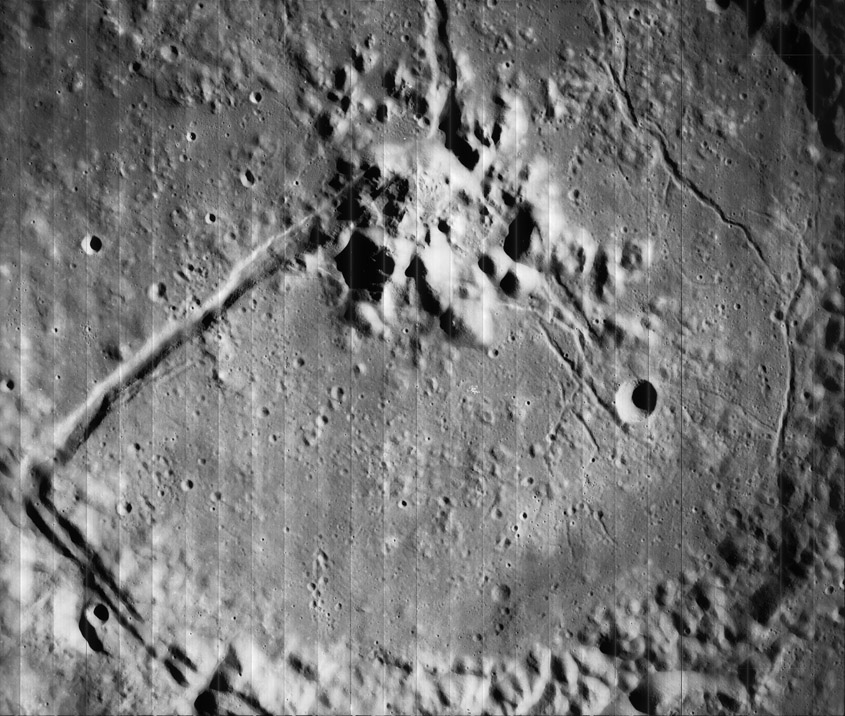
image by Lunar Orbiter V-033 from USGS Digitization Project
This is a view of the floor of Petavius at 16% of the resolution of the original Orbiter V frame. You can download the full res tiff file but this one is good enough to learn some new things. The most conspicuous feature of Petavius is the broad rille that goes from the rim to the central peaks. This image shows that the rille cuts into the edge of the peaks and then curves north; I didn’t know that the north rille was the continuation of the southwest one. This Orbiter V image also emphasizes the family of smaller rilles that extend from the peaks toward the southeast rim. This pattern of three rilles spaced about 120 degrees apart reminds me of fractures that occur on Earth where uplift occurs. Such triple junctions typically have unequal width rift arms, just as in Petavius. And we know that the floor of Petavius is domed up, consistent with the Earth analogy.
Technical Details:
An 80 mm lens was used to record LO V’s medium resolution images on 70 mm wide film. The film was developed on the spacecraft, scanned and radioed to Earth, where it was reconstructed as a series of framelet strip photographs that were mosaicked together. You can see the individual framelets as vertical stripes in the image above.
Related Links:
Rükl Plate 59
A great telescopic view of Petavius
Yesterday's LPOD: Another New Concentric Crater?
Tomorrow's LPOD: A Crater of Multiple Strangenesses
COMMENTS?
Register, Log in, and join in the comments.



